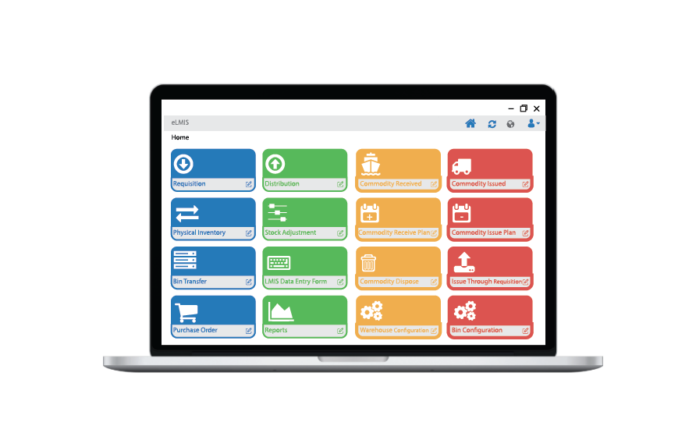-
The electronic logistics management information system (eLMIS) will digitalize the health commodity management and distribution of the Department of Health
-
eLMIS will centralize inventory and distribution of DOH’s medicines, vaccines, as well as medical devices and equipment nationwide, from DOH warehouses/hubs to LGU health centers
-
The system streamlines supply planning, purchasing and distribution of health commodities
-
Improvements in procurement are expected with the use of the eLMIS, as a centralized inventory will provide information on availability of specific medicines and vaccines
-
eLMIS will be piloted in three DOH warehouses this July before the nationwide rollout that will include health centers under LGUs
The Department of Health (DOH) is streamlining its medicines and equipment supply chain via the eLMIS or the electronic logistics management information system.
The eLMIS will centralize inventory and distribution of DOH’s medicines, vaccines, and medical devices and equipment nationwide from DOH warehouses/hubs to local government units’ (LGU) health centers.
eLMIS will be piloted in three DOH warehouses this July before nationwide rollout, including at health centers run by LGUs, InterCommerce Network Services Inc president Francis Lopez told PortCalls in a Viber message. INS is the local implementer of the project.
The system will use the Entution Vesta platform of Sri Lankan enterprise resource planning provider Bileeta (Pvt) Ltd. Entution Vesta is a cloud-based solution equipped with a data analytical tool and a fully-fledged supply chain management functionality.
A demo of the eLMIS was conducted on June 20 at the inauguration of DOH’s national warehouse and cold storage facility in Tala, Caloocan City.
The solution streamlines supply planning, purchasing and distribution of health commodities across all levels of supply chain entities from central warehouses, regional warehouses and district warehouses to service delivery points or health facilities.
Bileeta and INS have completed customization of the system to suit DOH procedures and requirements, as well as the conduct of user acceptance testing and training of DOH trainers and end-users from DOH warehouse facilities, Lopez said.
He noted improvements in procurement are expected with the use of the eLMIS, as the centralized inventory will provide information on availability of specific medicines and vaccines, among others.
Currently, there are different health programs that have their respective procurement activities, Lopez said. There are also substantial donations of medicines that previously are unmonitored as part of total inventory.
The eLMIS was identified as one of the required information systems under the DOH’s National Strategic Plan for Procurement and Supply Chain Management (PSCM), and is a key strategy to institutionalize a PSCM at all levels.
The eLMIS is expected to provide a more efficient means of collecting, organizing, and reporting data for performing operational and strategic procurement and supply chain management.
eLMIS will manage procurement, shipments, warehouses, inventory, stock allocation, and distribution at different levels of the supply chain.
Key benefits of the system include active systems integration, real-time transactions, accurate inventory levels, efficient storage management, improved order fulfilment time, reduced stockouts, and better access to health commodities.
As an initial activity, inventories at the DOH San Lazaro and Research Institute for Tropical Medicine warehouses will be moved to the new national warehouse in Tala, Caloocan City. – Roumina Pablo





